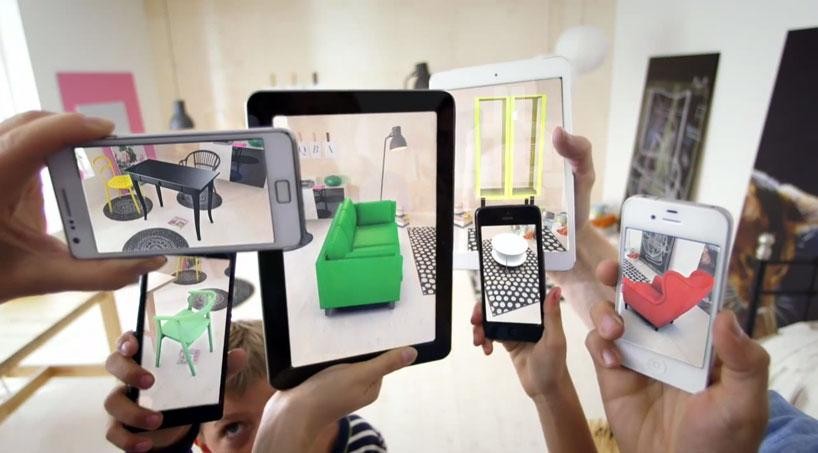In the ever-evolving landscape of online shopping, Augmented Reality (AR) has emerged as a transformative technology, reshaping how consumers interact with digital storefronts and products as such Fruit of The Loom. As online shopping continues to gain popularity, integrating AR into the e-commerce experience offers numerous benefits, from enhanced product visualization to personalized shopping journeys. This article explores how AR is revolutionizing online shopping and what it means for the future of retail.
What is Augmented Reality?
Augmented Reality (AR) is a technology that overlays digital information—such as images, sounds, and interactive elements—onto the real world through devices like smartphones, tablets, and AR glasses. Unlike Virtual Reality (VR), which creates an entirely artificial environment, AR enhances the real world by adding virtual layers of information and interaction. This capability has significant implications for online shopping, where visualizing products in a real-world context can influence purchasing decisions.
Enhanced Product Visualization
One of the primary ways AR is impacting online shopping is by enhancing product visualization. Traditionally, online shoppers have relied on 2D images and descriptions to understand a product. While detailed images and videos can help, they often fall short in providing a complete sense of how a product will look or fit into a customer’s environment.
AR bridges this gap by allowing customers to see products in their own space. For instance, furniture retailers use AR to enable customers to visualize how a sofa or a coffee table would look in their living room. This interactive experience helps shoppers make more informed decisions by providing a realistic representation of the product in their own home. Similarly, beauty brands use AR to let users try on makeup virtually, helping them choose products that best match their skin tone and style.
Personalized Shopping Experiences
AR also contributes to creating more personalized shopping experiences. By integrating AR with artificial intelligence (AI) and machine learning, e-commerce platforms can offer tailored recommendations based on user preferences and behaviors. For example, an AR-enabled fashion app can suggest outfits based on a user’s previous choices, body type, and style preferences. This level of personalization not only enhances the shopping experience but also increases the likelihood of conversion and customer satisfaction.
Improved Engagement and Interaction
The interactive nature of AR technology makes online shopping more engaging. Traditional online shopping experiences can sometimes feel static and impersonal. AR adds a dynamic element by allowing users to interact with products in a more immersive way. For instance, a customer shopping for a new pair of shoes can use AR to see how different styles look on their feet, rotating and zooming in to get a detailed view. This interactive approach keeps users engaged and can significantly reduce bounce rates on e-commerce sites.
Reducing Return Rates
One of the significant challenges in online shopping is the high rate of product returns. Customers often return items because the product did not meet their expectations based on online descriptions or images. AR helps mitigate this issue by providing a more accurate representation of the product before purchase. For instance, AR can show how a piece of clothing fits or how a piece of jewelry looks when worn, reducing the likelihood of disappointment and returns. As a result, businesses can save on return processing costs and improve overall customer satisfaction.
Bridging the Gap Between Online and Offline Shopping
AR technology also bridges the gap between online and offline shopping experiences. By integrating AR into online shopping platforms, retailers can offer a more tangible and realistic experience similar to shopping in a physical store. This integration helps online shoppers feel more confident about their purchases and creates a seamless transition between digital and physical retail experiences. For example, AR can simulate in-store environments or showcase how products fit within a specific space, providing a hybrid shopping experience that combines the best of both worlds.
The Future of AR in E-Commerce
The future of AR in e-commerce looks promising, with continuous advancements in technology driving innovation. As AR becomes more sophisticated, we can expect even more immersive and interactive shopping experiences. For instance, advancements in AR glasses and headsets could further enhance the ability to visualize products in real-time, creating a more integrated and seamless shopping experience. Additionally, the integration of AR with other emerging technologies, such as 5G and the Internet of Things (IoT), could open up new possibilities for personalized and interactive shopping experiences.
Challenges and Considerations
Despite its many benefits, the implementation of AR in online shopping is not without challenges. One of the primary concerns is the need for robust technology infrastructure and compatibility. Retailers must ensure that their AR applications work seamlessly across various devices and operating systems. Additionally, the development of high-quality AR experiences can be resource-intensive, requiring investment in both technology and content creation.
Privacy and security are also important considerations. As AR collects and processes data related to user preferences and behaviors, retailers must prioritize data protection and ensure compliance with privacy regulations. Transparent data practices and secure systems are essential to maintaining customer trust and ensuring a positive AR shopping experience.
Conclusion
Augmented Reality is undeniably transforming the online shopping landscape, offering enhanced product visualization, personalized experiences, and improved engagement. By bridging the gap between digital and physical retail, AR provides a more immersive and realistic shopping experience, reducing return rates and increasing customer satisfaction. As technology continues to advance, the potential for AR in e-commerce is boundless, promising even more innovative and interactive shopping experiences in the future. For retailers and consumers alike, embracing AR technology represents a step toward a more dynamic and engaging online shopping world






